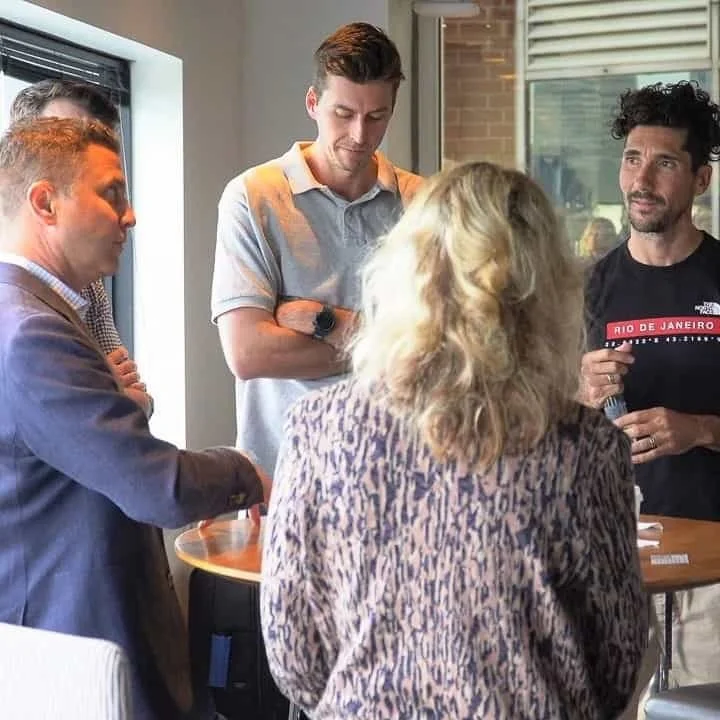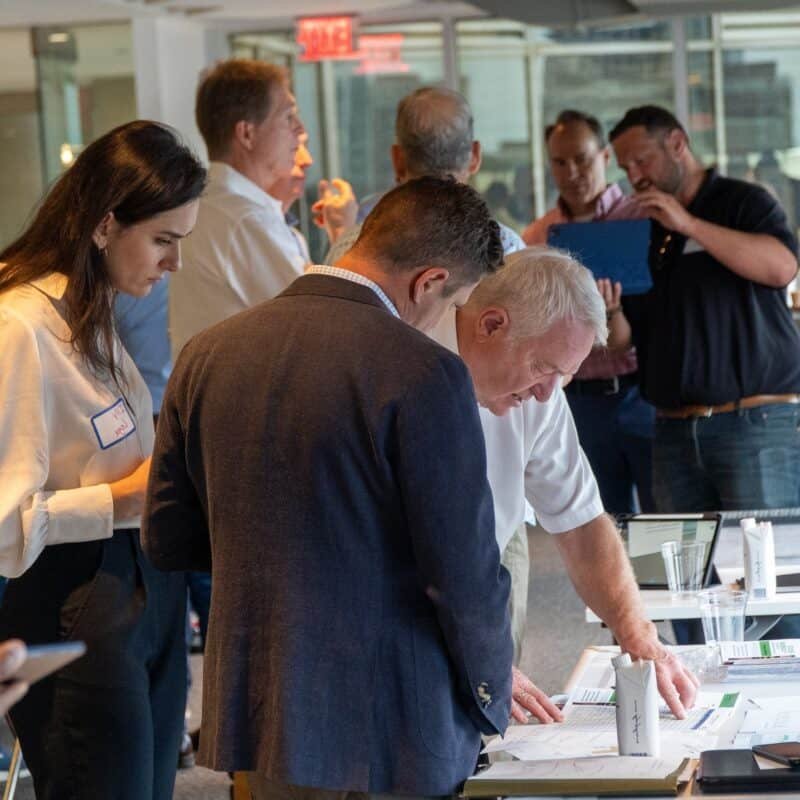BlueScope’s successful ‘Buildings of the Future’ Accelerator
Discover how the Neu21 run ‘Buildings of the Future’ Accelerator pushed this multi-national out of its comfort zone.
“Within the building industry, investments in innovation can be surprisingly linear,” says Luke Dawson, Vice President of Strategic Marketing, at BlueScope Buildings North America (BBNA).“But with our recent accelerator, the whole process was completely nonlinear to push us and the participating startups out of our comfort zones. That’s what has led to tremendous value for all of us, which will extend far beyond the program itself.”
The accelerator Dawson is talking about was a six-week global program called Buildings of the Future, hosted by BBNA and its venture arm BlueScopeX. From May to June 2023, nine startups from around the world took part in the program, and one company, GigBridge, won the top prize of $100,000 in no-strings-attached funding.
The accelerator produced far more than just a funding opportunity though. Five of the participants, (including GigBridge) are now partnering with BlueScope on pilot projects, post-accelerator.
“Our ability to customize the experience, on-the-go, as we went along, was critical to the success of the accelerator and the projects that came out of it. We weren’t held hostage by a plan or schedule we’d built before we really got under the hood of these companies,” says Hannah Gee of BlueScopeX.
“We collaborated quite deeply with participants so we could understand how they could best leverage their solutions for our sector.”
The purpose of Buildings of the Future was to help make the building industry more productive, adaptable, and sustainable, while strengthening communities and building a better world.
The nine selected startups focused on a broad range of areas including advanced AI and robotics, smart and sustainable building solutions, and customer experience technologies that could address some of the sector’s biggest challenges.
Looking ahead, BlueScope will continue to advance and incubate innovation across these verticals, now that the accelerator has wrapped.
The importance of a hyper-connected and hyper-collaborative innovation culture
While BlueScope has always invested in cutting-edge technology and ideas, the accelerator helped to further evolve the company’s approach to optimizing and deepening its own innovation culture.
“Once we started, we quickly realized the accelerator shouldn’t be just a moment in time where everybody’s leaning in for six weeks. And then back to business as usual. We discovered a different way we could operate in the future,” says Dawson.
“This experience inspired BlueScope to think hard about our culture and how to make it consistently hyper-connected and hyper-collaborative,” he continues.
“How can we weave people, initiatives, and outside organizations together in a more unstructured way, where we’re continuing to incubate and support and learn from one another? If we can unlock that, we can help unlock the future of our industry.”
Each of the pilot projects that came out of the accelerator is centered around innovating a key aspect of the building sector. But common amongst all of them are two critical areas of focus for BlueScope and the industry as a whole: 1) decarbonization and 2) smart and sustainable building.
“We talked about these two areas with all of the startups and the pilots we’re moving forward with are all tackling them in one form or another,” says Dawson.
“The smart and sustainable building initiatives are more near term while the decarbonization piece is a longer play with more work to do. But either way, we’re certainly going to continue to work with them beyond the six weeks, because they’re doing something quite meaningful in a market where a lot of solutions to these challenges haven’t been figured out yet.”
Creating a sustainable future for the building sector
Initiatives like Buildings of the Future — as well as an ongoing culture of innovation, that’s open to explore good ideas and solutions in a non-linear way — are critical for the construction industry, which is still playing catch up on digital transformation and sustainability, says Gee.
Because creating a more sustainable future for the sector is non-negotiable for both the planet and business success, she notes. A good starting point is to seek out foundational solutions to address today’s big challenges, as well as invest in products or ideas that may not yet be market-ready or need more incubation.
“All of these startups and solutions are going to be part of how we drive value for the industry, even if that value isn’t recognized as a commercial gain on day one,” says Gee.
“If certain solutions are likely to lead to the betterment of the building process, as well as meet the needs of our customers, it’s incumbent on all of us to find a way to bring them to life. So that’s our challenge. How do we encourage people to pursue better ways to build? That’s the question we need to answer right now.”
This article originally appeared on bluescopebuildings.com


